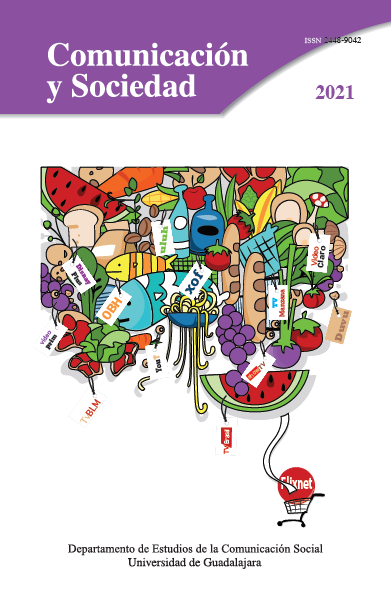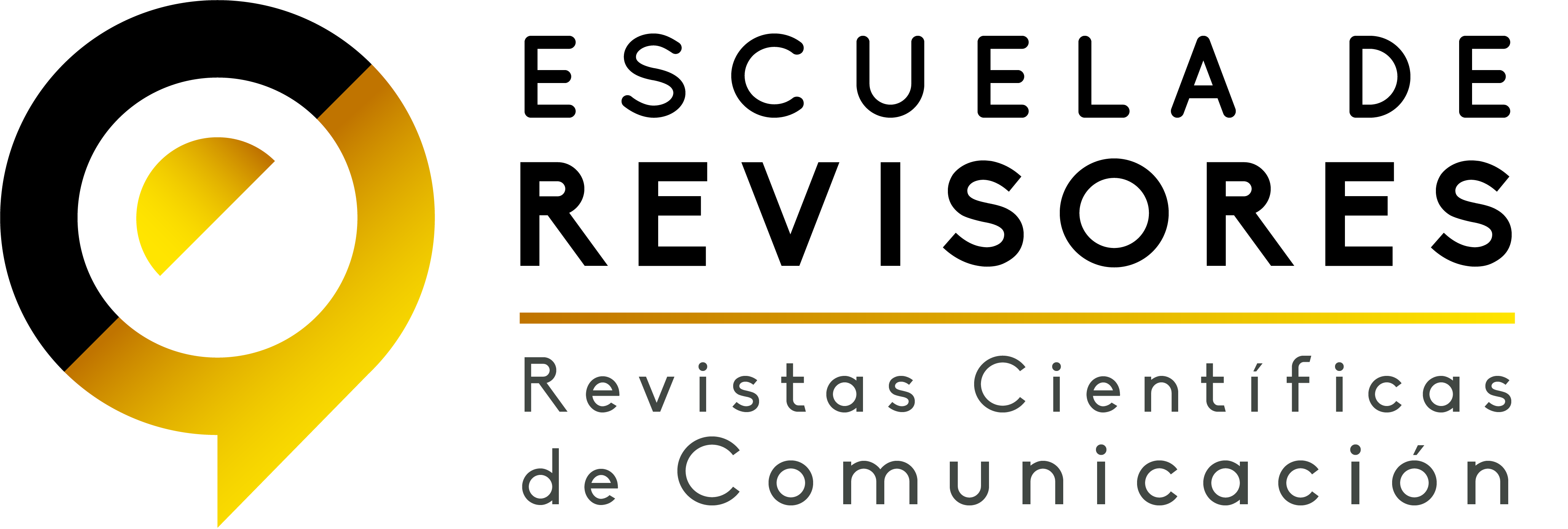La difusión transnacional de discursos sobre sexualidades no normativas vía Netflix: el caso Sex Education (2019-2020)
DOI:
https://doi.org/10.32870/cys.v2021.8041Palabras clave:
Sex Education, Netflix, LGBTIQ , Series para adolescentes, TransnacionalidadResumen
Este trabajo estudia cómo la serie Sex Education difunde transnacionalmente discursos sobre sexualidades no normativas, igualdad y diversidad LGBTIQ+. Desde los Estudios LGBTIQ+ se aplica un diseño mixto con metodología no experimental de tipo ex-postfacto usando instrumentos de medición e interacción transmedia y los informes ILGA World y Global Attitudes. Se confirma que Netflix, vía Sex Education, difunde transnacionalmente valores de diversidad e igualdad sexo-genérica en países sin pleno amparo social y jurídico a dicha diversidad, propiciando la construcción de otras subjetividades.Descargas
Citas
Adnan Pitchan, M., Isa, A. M., Wan Mahmud, W. A., Wan Sulaiman, W. I. (2019). Netflix and Dilemma of Content Regulation in Malaysia. International Journal of Advanced Science and Technology, 28(16), 460-468. http://sersc.org/journals/index.php/IJAST/article/view/1782
Aguiar, L. & Waldfogel, J. (2018). Netflix: global hegemon or facilitator of frictionless digital trade? Journal of Cultural Economics, 42(3), 419-445. https://doi.org/10.1007/s10824-017-9315-z
Audiense. (2020). Sex Education (Netflix) [Informe]. https://audiense.com/
Azhar, A. (2019). Acceptability Aspects Of Taboo Terms Translation In Netflix Series Subtitle: Sex Education In Indonesian Translation. Universitas Islam Negeri Syarif Hidayatullah Jakarta. https://bit.ly/3nRqc0b
Buendía, L., Colas, M. P. & Hernández, F. (1998). Métodos de investigación en psicopedagogía. McGraw-Hill.
Condy, R. & Ivan, S. (2019). Getting to Great. How Young Women in Singapore Experience Depictions of Sex in Youth Television. Malmö Universitet.
Demory, P. & Pullen, C. (2013). Queer Love in Film and Television: Critical Essays. Palgrave Macmillan.
Del Olmo, F. J. R. & Bustos Díaz, J. (2020). Opinión pública y nuevas estrategias comunicativas en la industria audiovisual: el caso de Netflix y la serie Sense8. Opinião Pública, 26(2), 377-400. https://doi.org/10.1590/1807-01912020262377
Eberhard, D. M., Gary, F. S. & Charles, D. F. (2021). Ethnologue: Languages of the World. 24th edition. SIL International. http://www.ethnologue.com
Farr, B. (2016). Seeing Blackness in Prison: Understanding Prison Diversity on Netflix’s Orange is the New Black. En K. McDonald & D. Smith-Rowsey (Eds.), The Netflix Effect:Technology and Entertainment in the 21st Century (pp.155-169). Bloomsbury.
Ferrera, D. (2020). Construcción del personaje adolescente en la ficción seriada europea. Las series originales de Netflix como caso de estudio. Fonseca, Journal of Communication, (21), 27-41. https://doi.org/10.14201/fjc2020212741
Fisher, D. A., Hill, D. L., Grube, J. W., Bersamin, M. M., Walker, S. & Gruber, E. L. (2009). Televised sexual content and parental. Media psychology, 12(2), 121-147. https://doi.org/10.1080/15213260902849901
Floegel, D. & Costello, K. L. (2019). Entertainment Media and the Information Practices of Queer Individuals. Library & Information Science Research, 41(1), 31-38. https://doi.org/10.1016/j.lisr.2019.01.001
Gagnon, J. H. & Simon, W. (1973). Sexual conduct: The social sources of human sexuality. Aldine Books.
García-Leiva, M. T. (2017). Desafíos y oportunidades para la diversidad del audiovisual en internet. Política & Sociedade, 16(35), 132-158. https://doi.org/10.5007/2175-7984.2017v16n35p132
GLAAD. (2020). Where We Are on TV. 2019-2020 [Informe]. GLAAD Media Institute. https://bit.ly/3ur2yKz
ILGA World-The International LGBTI Association. (2020). Informe Homofobia de Estado 2020. ILGA World. http://bit.ly/3mXvGVb
Liew, W. M. (2014). Sex (Education) in the City: Singapore’s Sexuality Education Curriculum. Discourse: Studies in the Cultural Politics of Education, 35(5), 705-717. https://doi.org/10.1080/01596306.2014.931114
Lobato, R. (2017). Rethinking International TV Flows Research in the Age of Netflix. Television & New Media, 9(3), 241-256. https://doi.org/10.1177/1527476417708245
Lobato, R. (2019). Netflix Nations: The Geography of Digital Distribution. New York University Press.
Matrix, S. (2014). The Netflix effect: Teens, binge watching, and on-demand digital media trends. Jeunesse: Young People, Texts, Cultures, 6(1), 119-138. https://doi.org/10.1353/jeu.2014.0002
Netflix. (2019). Annual Report on Form 10-K. Netflix, Inc. https://bit.ly/37Y14hZ
Opie, D. (18 de abril de 2019). Why Netflix is leading the way when it comes to LGBTQ+. Digital Spy. http://bit.ly/34Vvsrn
Parsemain, A. L. (2019). The Pedagogy of Queer TV. Palgrave Macmillan.
Peters, W. (2016). Bullies and Blackmail: Finding Homophobia in the Closet on Teen TV. Sexuality & Culture, 20, 486-503. https://doi.org/10.1007/s12119-016-9336-3
Pew Research Center. (2019). Global Attitudes & Trends Report [Informe]. http://pewrsr.ch/3rBxJBL
Pullen, C. (Ed.). (2014). Queer Youth and Media Cultures. Palgrave Macmillan
Porter, R. (17 de enero de 2019). Netflix Reveals Viewership Numbers for 'You', 'Sex Education' and More. Hollywood Reporter. http://bit.ly/3goj5ag
Scarcelli, C. M. (2014). One Way or Another I need to Learn this Stuff! Adolescents, Sexual Information, and the Internet’s Role Between Family, School, and Peer Groups. Interdisciplinary Journal of Family Studies, 19(1), 40-59. http://ijfs.padovauniversitypress.it/2014/1/3
Van Damme, E. & Biltereyst, D. (2013). Let’s Talk about Sex: Audience Research of Flemish Teenage Television Viewers and Their View on Sexuality. Journal of Youth Studies, 16(3), 287-303. https://doi.org/10.1080/13676261.2012.710744
Vázquez-Rodríguez, L. G., García-Ramos, F. J. & Zurian, F. A. (2020). La representación de identidades queer adolescentes en Sex Education (Netflix, 2019). Fonseca, Journal of Communication, 21, 43-64. https://doi.org/10.14201/fjc2020214364
Yin, R. K. (1994). Case Study Research. Design and Methods. Sage Publications.
Zurian, F. A. (2013). Cuerpos masculinos, hormonas y sexo en la ficción televisiva. En F. A. Zurian (Ed.), Imagen, cuerpo y sexualidad. Representaciones del cuerpo en la cultura audiovisual contemporánea (pp. 157-177). Ocho y Medio.
Descargas
Publicado
Cómo citar
Número
Sección
Licencia
Derechos de autor 2021 Francisco A. Zurian, Francisco-Jose Garcia-Ramos, Lucía-Gloria Vázquez-Rodríguez

Esta obra está bajo una licencia internacional Creative Commons Atribución-NoComercial 4.0.
Los autores/as que publiquen en esta revista aceptan las siguientes condiciones:
De acuerdo con la legislación de derechos de autor, los autores conservan los derechos de autoría y otorgan a Comunicación y Sociedad el derecho de primera comunicación pública de la obra. Comunicación y Sociedad no realiza cargos a los autores por enviar y procesar artículos para su publicación.
Los autores/as pueden realizar otros acuerdos contractuales independientes y adicionales para la distribución no exclusiva de la versión del artículo publicado en Comunicación y Sociedad (por ejemplo incluirlo en un repositorio institucional o publicarlo en un libro) siempre que indiquen claramente que el trabajo se publicó por primera vez en Comunicación y Sociedad.


























